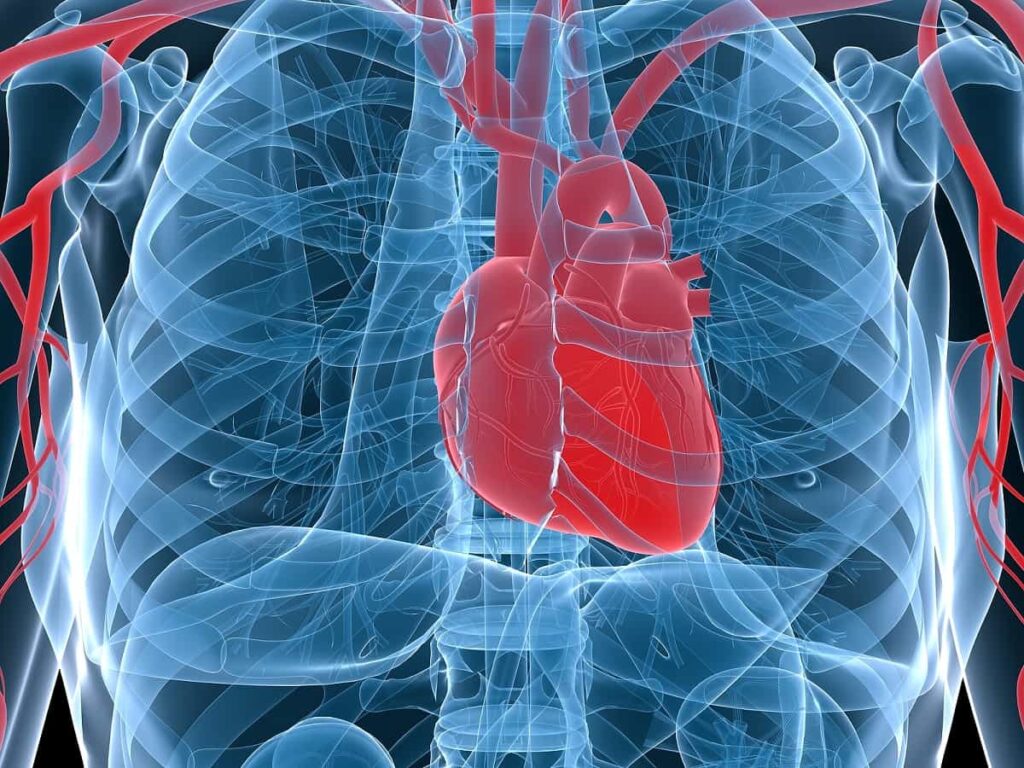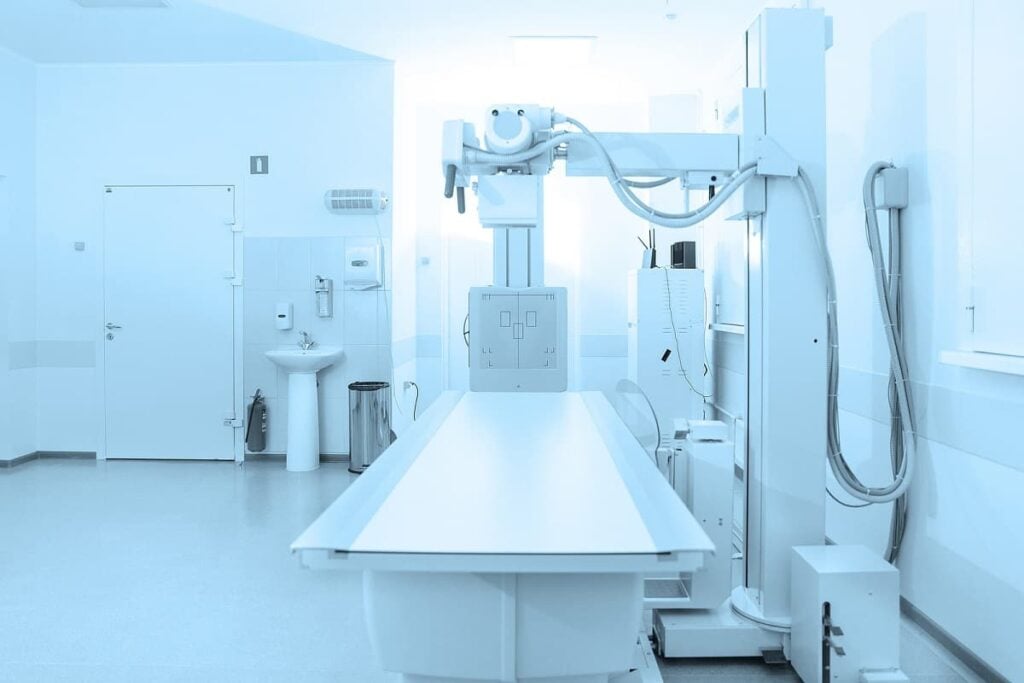HeartFlow Stock: Using AI to Combat Heart Disease
Table of contents

The older you get, the more you start to understand why old people spend so much time talking about their health problems. It usually starts in your mid-40s when you realize you’re at the age where you should get regular health screens. You go in for bloodwork, and the doctor says you have high cholesterol. So, you start on “the Mediterranean diet,” buy a new jogging watch, and even briefly consider kicking your methamphetamine habit getting off your ADHD medication. After a few weeks, you’re right back into your old habits, and eventually, just adopt the American solution to healthcare problems – another pill.
Cardiovascular disease is no joke. It’s the number one cause of death accounting for one out of three deaths, more than twice as many deaths as the second most common cause (cancer). About one in every six healthcare dollars is spent on heart disease, and it’s almost certain that you or someone you know will be affected by it. Given the scope of the problem, there’s likely to be lots of delicious big data lying around that we can feed to some hungry artificial intelligence (AI) algorithms which can help us save lives and make loads of money.
About HeartFlow Stock
Founded in 2007, Silicon Valley’s own HeartFlow has raised just over $577 million in disclosed funding with a current valuation of $1.3 billion, at least according to the CB Insights Unicorn List. All that funding has been used to build an “AI-enabled, cloud-based enterprise software suite” to help with risk assessment, diagnosis, planning, and treatment management for cardiovascular disease. For those of you who aren’t familiar with what it’s like to be an old person, let’s talk about how things work today.
Invasive vs. Non-Invasive Testing
Any competent physician will likely pick up on early warning signs for heart disease risk during a routine physical, things like high cholesterol, a family history of heart failure, or a fondness for Colombian marching powder. A sufficiently high degree of risk may call for further non-invasive testing of which there are 10 million such tests administered in the U.S. alone.

It’s easy to imagine how today’s newly born child will have most their healthcare decisions informed by an electronic health record and corresponding genomic profile. Today’s methods of risk assessment are probably rudimentary at best when compared to tomorrow’s vision of precision medicine. That’s why HeartFlow is looking beyond just improving current methods. The company wants to both improve the ability to correctly diagnose heart disease and eliminate the need for unnecessary invasive procedures.

An invasive angiogram is as horrible as it sounds. Also called an Invasive Coronary Angiography (ICA), it’s a procedure that requires inserting wires and catheters into an artery in a patient’s wrist or leg, which are then threaded up to the heart under x-ray guidance. Through the catheter, x-ray dye is injected, and x-ray pictures are taken of the coronary arteries, outlining areas of narrowing. The process is an absolute cash cow for hospitals, but for patients, it’s costly and potentially problematic as complications can occur. Surprisingly, 55% of patients who undergo this invasive procedure don’t even need it. And that’s where HeartFlow comes in.
The HeartFlow Analysis
The HeartFlow Analysis is a cloud-based software platform that uses deep learning to produce a precise, patient-specific, three-dimensional computer model of a patient’s coronary arteries, based on analyzing data from a patient’s CTA, a non-invasive imaging test.
Computed tomography angiography (CTA) is a type of medical test that combines a CT scan with an injection of a special dye to produce pictures of blood vessels and tissues in a part of your body. The dye is injected through an intravenous (IV) line started in your arm or hand and “lights up” blood vessels and tissues that are being studied.
Credit: John Hopkins
A key limitation of CTA as a standalone first-line test lies in its inability to characterize the clinical importance of intermediate stenoses (arterial narrowings of 30-90%). That’s why invasive procedures are needed beyond just a CTA. Then there’s the additional problem of 20-30% false negatives (patients who actually have heart disease that goes undetected during a CTA). HeartFlow solves both these problems.
Once a CTA test has been performed, the accompanying imagery is fed to HeartFlow’s algorithms which use computational fluid dynamics to model blood flow through the 3D model’s arteries.

HeartFlow’s algorithms have been trained on tens of thousands of CTA cases including more than 15 million images extracted from cardiac CT scans. The end result is information which has altered patient management in over 60% of cases, and has allowed safe avoidance of ICA in > 60% of cases where ICA was initially intended. With HeartFlow, a non-invasive procedure can replace an invasive procedure while also providing better outcomes.
As of June 30, 2021, the HeartFlow Analysis has been performed on over 100,000 patients. The HeartFlow S-4 filing presents many study outcomes which show the superiority of their platform over existing methods. Approximately 96% of Americans with commercial health insurance have coverage for the HeartFlow Analysis which is offered at 300 sites in the U.S., including 80% of the country’s top 50 heart hospitals.
Show Us the Money
Even with a strong U.S. presence, HeartFlow was still able to generate over a quarter of total revenues from customers outside of the United States. That’s a big plus. In looking at historical revenues, we see a +15.7% growth rate from 2019 to 2020. Then suddenly that growth jumps to +85% with 2021 revenues expected to reach $42 million. Below you can see the two actual years of revenue history we’re given (in green) compared to the next two year’s expectations (in blue).

As you would expect, last year’s slowing growth was blamed on The Rona.
As the number of clinical visits declined due to stay-home mandates and sharp reduction in elective and diagnostic procedures during 2020, the Company’s revenues from analysis of CAT scan images, were severely impacted.
And therein lies the flaw of not having a revenue model based on subscriptions. While HeartFlow says they’re pursuing a subscription model alongside a pay-per-use model, fee-per-analysis HeartFlow Analysis fees constituted over 95% of their total revenues in 2020. We’d like to see them deliver on 2021 revenues of $42 million before we start believing that 2022 revenues will come in at $92 million.
There’s a big total addressable market (TAM) on the table here of $10 billion based on what they can do today, but expanding their platform to include other use cases could increase TAM up to $50 billion.

And wherever there’s a big blue ocean TAM, there will be sharks.
The Competition
Taking medical imaging data and deriving insights from it isn’t a novel idea. In this case, HeartFlow is doing something that extends well beyond looking for nodules in lung x-rays and actually doing something a bit more sophisticated. Generating a 3D model of the heart and associated vessels, and then modeling how blood flows through them, is pretty sophisticated technology that HeartFlow is protecting with – we can only assume – a formidable intellectual property portfolio (both founders were professors at Stanford University where a lot of medical imaging innovation is born).
In evaluating HeartFlow as a prospective company to merge with, the special purpose acquisition company (SPAC) operators said they performed a competitive analysis, the entirety of which one hopes was included in their regulatory filing documents. The short answer is that HeartFlow competes mainly with the old school providers of screening methods such as CTAs. They also point out that the providers of CT machines could easily start to bundle them with similar functionality which would make it more difficult for HeartFlow to sell their own solution.
The S-4 filing that accompanies this SPAC contains a lot more information than what can be found in the glossy investment deck. While we prefer an orderly well-organized 10-K with sufficient historical revenue information, we need to make a decision based on the information available today.
Should You Buy HeartFlow Stock?
HeartFlow has decided to go public using a SPAC called Longview Acquisition Corp. II (LGV). Until the SPAC merger is finalized late this year, you shouldn’t touch this issue for reasons we outlined in our piece titled Why Are Popular SPACs Falling Down? That’s because you don’t actually own shares of HeartFlow until the ticker changes from LGV to HFLO. Once the merger is complete, we can then decide whether or not to buy shares.
Using our simple valuation ratio, we see that the company is extremely overvalued right now.
- Implied Market Cap / Q1-2021 Revs Annualized
2,774 million / 32.5 million = 85
We won’t even consider investing in a company with a valuation ratio over 40, no matter how great their growth story is. HeartFlow would rather we used their forecasted revenues for 2023 of (checks notes) $205 million when we’re calculating this ratio, but that’s not how we roll.
Another concern might be in why hospitals would choose to adopt a platform that would actually displace their invasive angiogram cash cows. This is where insurance companies might need to strongarm healthcare providers into using such a procedure which saves them from having to shell out for more expensive invasive procedures that aren’t even necessary half of the time. Another strategy might be to sell the solution in countries with socialized medicine where all stakeholders are equally incented to reduce costs.
Conclusion
We really like the innovation on display here from HeartFlow’s AI healthcare solution. The thesis is fairly easy to understand, and the technology can benefit loads of people. While we’d like to see a subscription offering, steady quarterly growth and a growing user base would probably suffice, provided that revenue streams show some predictability over time. It’s a great story, but way too richly valued right now. Once HeartFlow meets, or hopefully exceeds, that 2021 revenue estimate, we’ll come around for another look.
Sign up to our newsletter to get more of our great research delivered straight to your inbox!
Nanalyze Weekly includes useful insights written by our team of underpaid MBAs, research on new disruptive technology stocks flying under the radar, and summaries of our recent research. Always 100% free.
















Some SPAC notes as well. This is a pipeless transaction. Heart flow could theoretically get no money if everyone redeems, which we have been seeing high redemptions lately. The spac sponsors also promoted a special dividend after the merger closes that gets returned to the spac shareholders. It see,s to be about 10%. Interesting company but I won’t buy due to the way the spac is setup.
Thank you for that additional info. We’ve been avoiding getting into the mechanics of SPAC transactions which are often confusing at best. You raise a good point that not all SPACs are created the same. Perhaps the best way to approach a SPAC is to wait a while post-merger and then see what actually happened. We’ve covered over 50 SPACs and aren’t holding one. A few we are interested in post-merger are Planet and Ginkgo Bioworks which both appear to be very good businesses.
REDWOOD CITY, Calif. – February 4, 2022 — HeartFlow Holding, Inc. (“HeartFlow”), the leader in revolutionizing precision heart care, today announced that it and Longview Acquisition Corporation II(NYSE: LGV), a special purpose acquisition company sponsored by affiliates of Glenview Capital Management, LLC, have mutually agreed to terminate their previously announced business combination agreement, effective immediately, as a result of current unfavorable market conditions.
It was delisted from our tech stock catalog, thank you for posting!